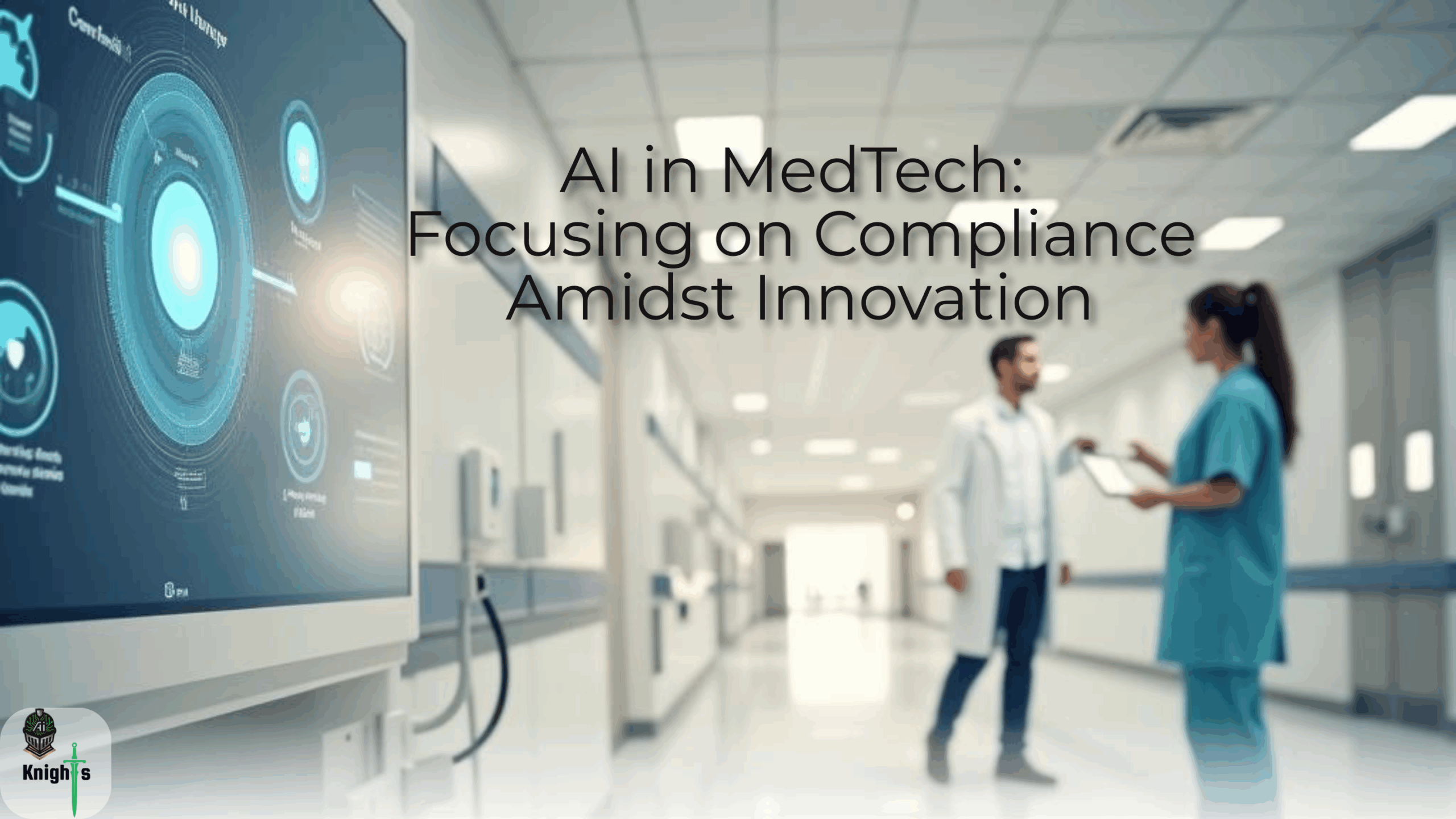Healthcare in Europe and beyond stands at a transformative crossroads. Artificial Intelligence (AI) is rapidly evolving from experimental technology to clinical reality, with the global AI healthcare market projected to reach $491 billion by 2032 [source1]. Yet, this revolutionary potential meets a complex regulatory landscape. In the EU, the AI Act (effective August 2024) [source2], GDPR, and MDR form a stringent compliance ecosystem that MedTech companies must navigate to innovate responsibly.
The Promise of AI in HealthTech
Transformative Applications Across Healthcare
- Diagnostics: AI-driven imaging tools achieve detection accuracies exceeding 90% for breast cancer, often surpassing human radiologists [source1].
- Clinical Workflows: Predictive analytics forecast ICU admissions and optimize bed management, reducing costs by up to 15% [source1].
- Patient Management: AI-powered virtual assistants deliver personalized medication reminders, improving adherence by 25% [source1].
Potential Impact: Efficiency, Precision, Patient Outcomes
- Economic Savings: AI could save European healthcare systems over €50 billion annually by 2027 [source3].
- Patient Outcomes: Early sepsis prediction reduces mortality rates by 20% in EU hospitals [source1].
The Compliance Challenge: Navigating Stringent Regulations
Key EU Regulations
- EU AI Act: Classifies most healthcare AI as “high-risk,” requiring comprehensive risk management, data governance, transparency, and human oversight [source2].
- GDPR: Protects health data as a special category, mandating explicit consent, pseudonymization, and DPIAs [source2].
- MDR: Adds conformity assessments, clinical validation, and post-market surveillance for AI-enabled devices [source2].
“High-Risk” Classification Under the AI Act
High-risk AI systems include devices integral to medical diagnosis, treatment, and care [source2]. Compliance demands:
- Risk management systems throughout the AI lifecycle [source4].
- Technical documentation and logging of design choices [source4].
- Human oversight protocols ensuring clinician intervention capabilities [source4].
Real-Life Tensions: Balancing Innovation and Regulation
Case Studies
- MedTech Europe warns of “regulatory lasagna” from overlapping EU directives, urging harmonization across member states [source5].
- Algorithmic Bias: AI tools trained on male-skewed datasets show 15% lower accuracy for female chest X-rays, highlighting the need for diverse data and continuous bias monitoring [source6].
Strategies for Compliance-Driven Innovation
- Compliance by Design: Embed AI Act and GDPR requirements at project inception [source7].
- Cross-Functional Teams: Include legal, clinical, technical, and compliance experts [source8].
- FUTURE-AI Framework: Apply principles of fairness, traceability, and explainability developed by international experts [source9].
- Real-World Evidence (RWE): Leverage RWE for post-market validation, per FDA and EU guidance [source10].
Best Practices and Future Directions
Building Trustworthy AI
- Transparent Communication: Clearly inform clinicians and patients about AI use [source9].
- Continuous Monitoring: Automate performance checks and adverse event reporting [source8].
- Inclusive Design: Engage patient groups in system development to ensure equity [source6].
Anticipating Regulatory Trends
- AI Sandboxes: EU pilot programs enabling controlled real-world testing of high-risk AI [source2].
- Adaptive Regulation: Frameworks evolving with AI advancements, driven by international harmonization efforts [source3].
Conclusion: Responsible Innovation as Competitive Advantage
The companies that thrive will treat regulatory compliance not as a hurdle but as a foundation for trustworthy, patient-centered AI solutions. By embedding compliance early, prioritizing ethical governance, and fostering stakeholder collaboration, MedTech innovators can unlock AI’s full potential in Europe and beyond.
Sources
1. FDA: Examples of Real-World Evidence (RWE) Used in Medical Device Regulatory Decisions
2. European Commission: Artificial Intelligence in healthcare – Official Policy Overview
3. LegalNodes: EU & UK AI Healthcare Regulation Tracker 2025 — EU AI Act and High-Risk MedTech Guidance
4. Stanton Chase: Regulatory Changes in MedTech in 2025
5. DirJournal: The AI Act—Responsibilities and Obligations for Healthcare (2025)
6. MedTech Europe—One Year of AI Act: Industry Calls for Coherent Implementation (July 2025)
7. Paubox: AI Algorithmic Bias in Healthcare Decision Making (2025)
8. Osborne Clarke: European Commission consultation shapes high-risk AI classification for life sciences and healthcare
9. World Economic Forum: The Future of AI-Enabled Health 2025
10. FUTURE-AI: International Consensus Guideline for Trustworthy AI in Healthcare (2025)


Leave a Reply